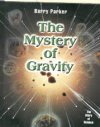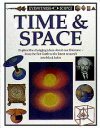Black Hole Journey Additional Information
Share this:
- Share via email (Opens in new window) Email
- Click to share on Facebook (Opens in new window) Facebook
- Click to share on X (Opens in new window) X
- Click to share on Pinterest (Opens in new window) Pinterest
- Click to share on Reddit (Opens in new window) Reddit
- Share to Google Classroom (Opens in new window) Google Classroom
- Click to print (Opens in new window) Print
You can learn more about black holes at kids.msfc.nasa.gov/Space/Black%20Holes/ (NASA). For additional information on black holes, see curious.astro.cornell.edu/blackholes.php (Cornell University) and www.valdosta.edu/phy/astro/pl_shows/bh_2001/bh/ (Valdosta State University).
Cowen, Ron. 2004. Information, please. Science News 166(Sept. 25):202-204. Available at http://www.sciencenews.org/articles/20040925/bob9.asp.
Sohn, Emily. 2004. Burst busters. Science News for Kids (Aug. 11). Available at http://www.sciencenewsforkids.org/articles/20040811/Note3.asp.
______. 2004. Strange universe: The stuff of darkness. Science News for Kids (Feb. 11). Available at http://www.sciencenewsforkids.org/articles/20040211/Feature1.asp.
______. 2003. Tossing out a black hole life preserver. Science News for Kids (Sept. 3).
Available at http://www.sciencenewsforkids.org/articles/20030903/Note3.asp.
______. 2003. Black holes that burp. Science News for Kids (April 9). Available at http://www.sciencenewsforkids.org/articles/20030409/Note3.asp.
For Teachers:
No Escape: The Truth About Black Holes amazing-space.stsci.edu/resources/explorations/blackholes/teacher/index.html Space
Telescope Science Institute
Books recommended by SearchIt!Science:
 |
Black Holes — Heather Couper
Published by DK Publishing, 1996.
What are black holes? Black holes are the most mysterious things in the cosmos. Although they are invisible, astronomers know that they are real. Learn how scientists know they exist. Take an imaginary trip inside one. Learn about wormholes, quasars, mirages, and ripples. |
 |
The Mystery of Gravity — Barry Parker
Published by Benchmark Books/Marshall Cavendish, 2003.
What would have happened to the field of science if Isaac Newton had not watched an apple fall out of a tree? Newton may not have discovered the universal law of gravitation, and we might still not understand how gravity works. Find out how scientists such as Copernicus, Kepler, Galileo, and Einstein studied the mysterious force that holds us to Earth. Learn new theories about how the universe was formed. Discover what we know about gravity today, and what the future holds for our galaxy. |
 |
Time and Space — John Gribbin
Published by Dorling Kindersley, 1994.
What exactly is time and who decided how to measure it? Could you ever travel back in time or into the future? What is the Big Bang theory? These are some of the questions that this book explores with large color photos, illustrations, diagrams, and explanations. It introduces ancient theories about space and time, as well as modern research into the physics of how Earth was formed. Individual scientists who contributed to our knowledge of space and time—from Isaac Newton to Albert Einstein to modern physicists—are profiled, too. |
Power Words
black hole An object in outer space that is so dense that its gravity will not let anything escape from it, not even light. Black holes are formed by the collapse of a star in a giant explosion called a supernova.
A black hole’s powerful gravity pulls matter away from a nearby star. Before disappearing into the black hole, the matter becomes so hot that it shoots out beams of x-rays above and below the swirling disk.
gravity An invisible force that pulls all objects toward each other. The more mass the objects have and the closer together they are, the stronger this force is. The gravity of the Earth pulls all objects toward the Earth’s center.
The force of gravity depends on the amount of mass in an object. The Moon has much less mass than the Earth, and you would weigh six times less on the Moon than you do on Earth. The large planet Jupiter has more mass than the Earth, and on it you would weigh two and one-half times what you weigh on Earth.
supernova A gigantic explosion of a star. Supernovas occur when the inner part of a star collapses because the star has so much mass that its gravity pulls this material into its center. The energy released by the collapse of the star’s core causes its outer layers to explode. Supernovas can be 100 million times brighter than the Sun.
Copyright © 2002, 2003 Houghton-Mifflin Company. All rights reserved. Used with permission.
